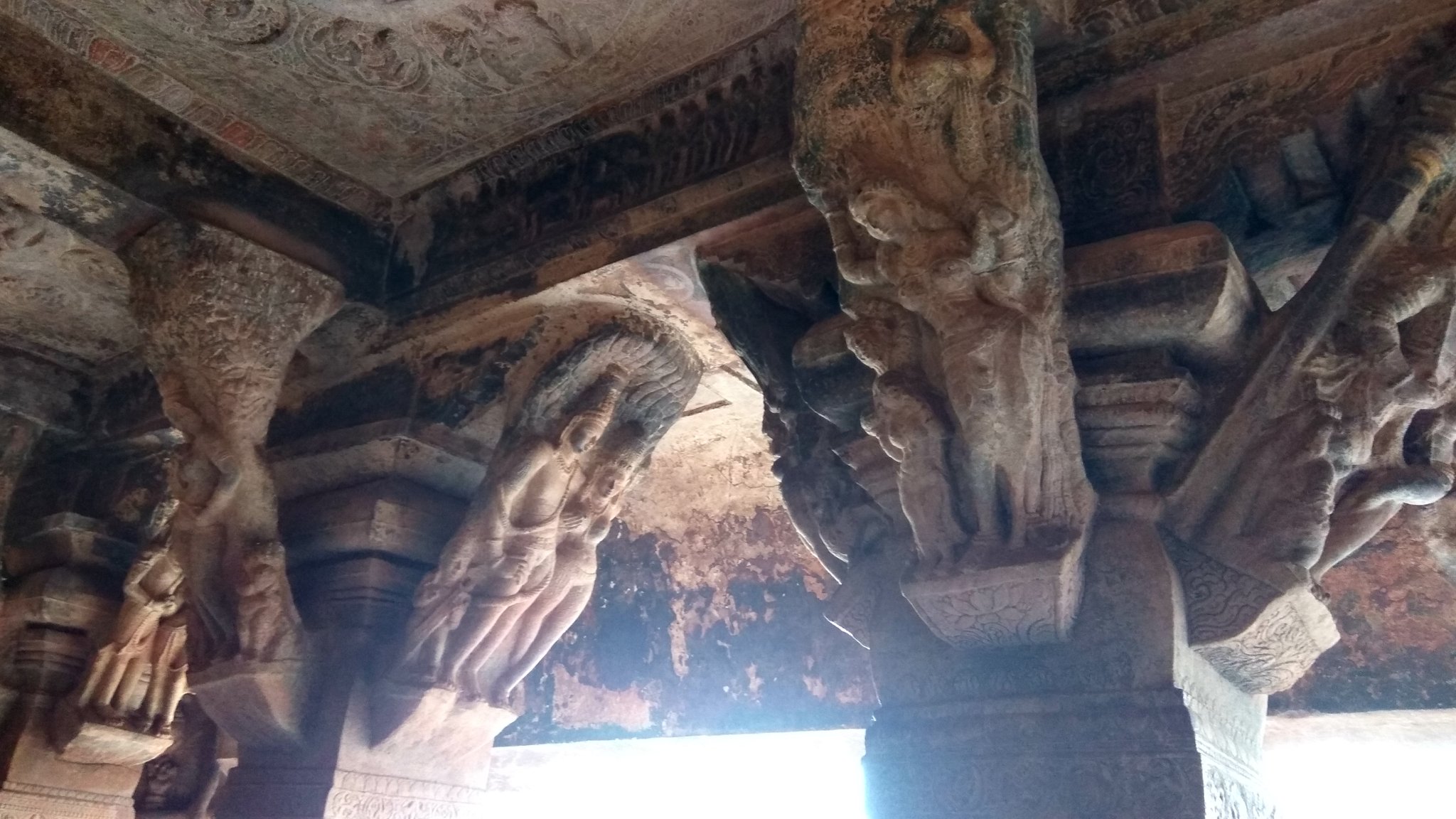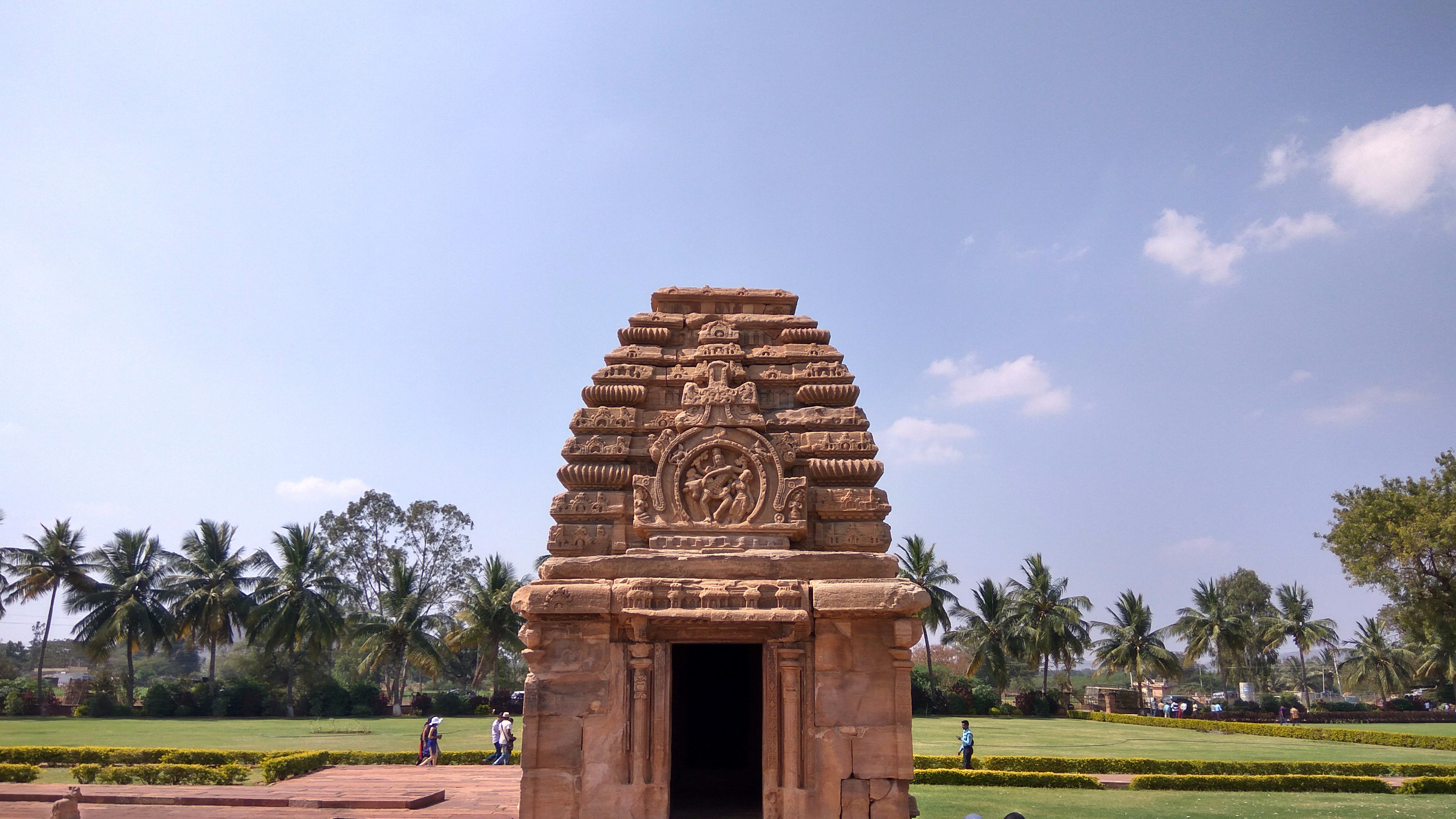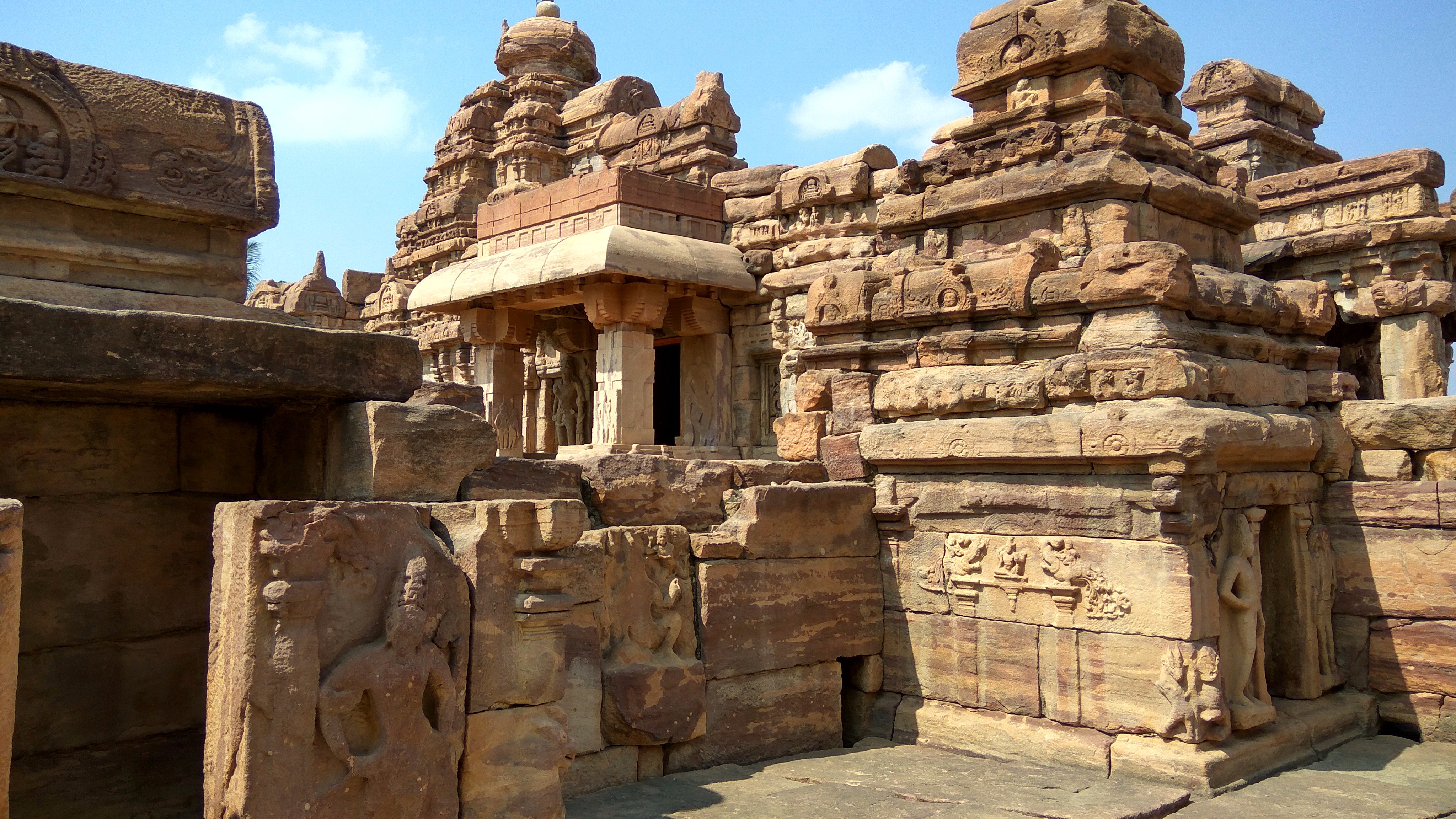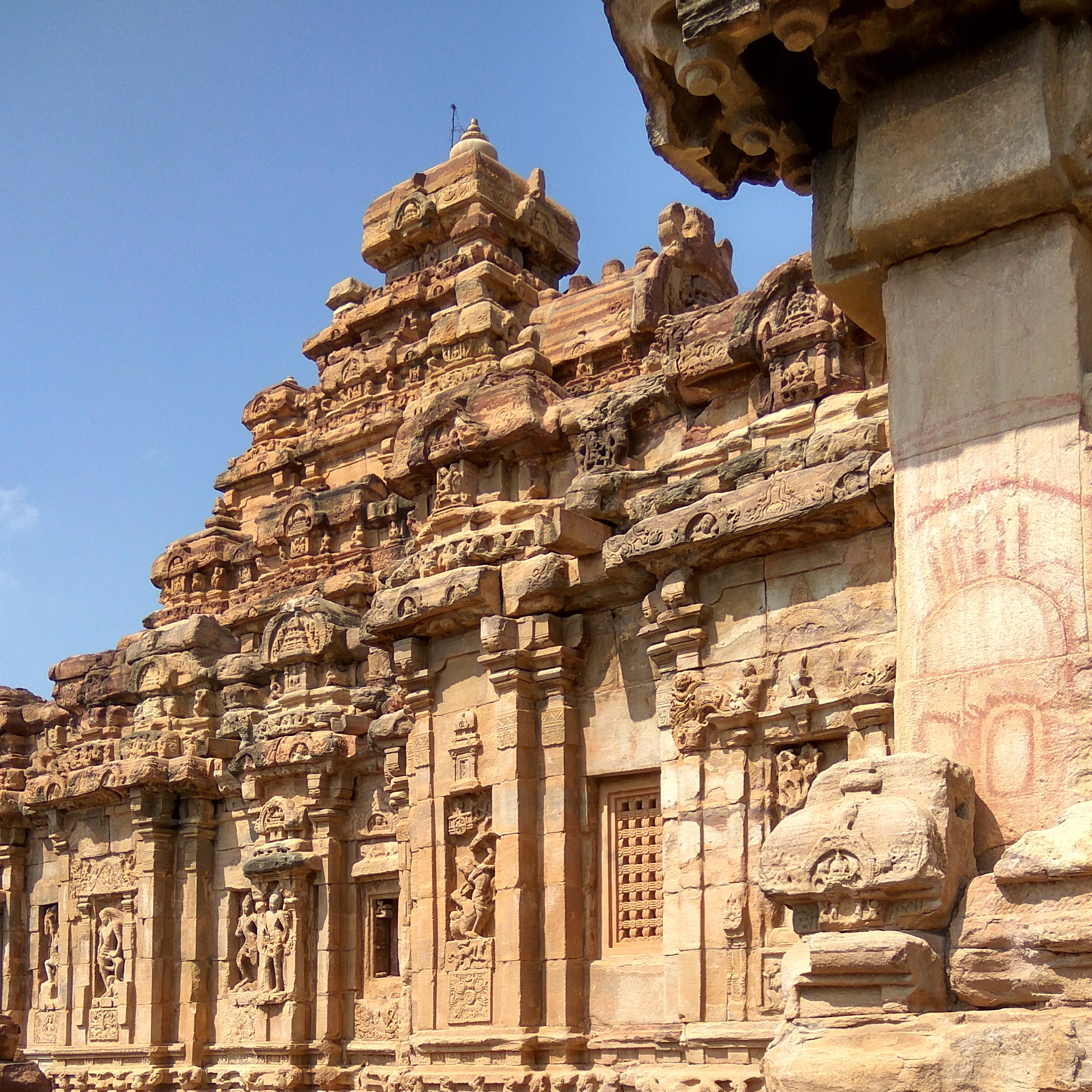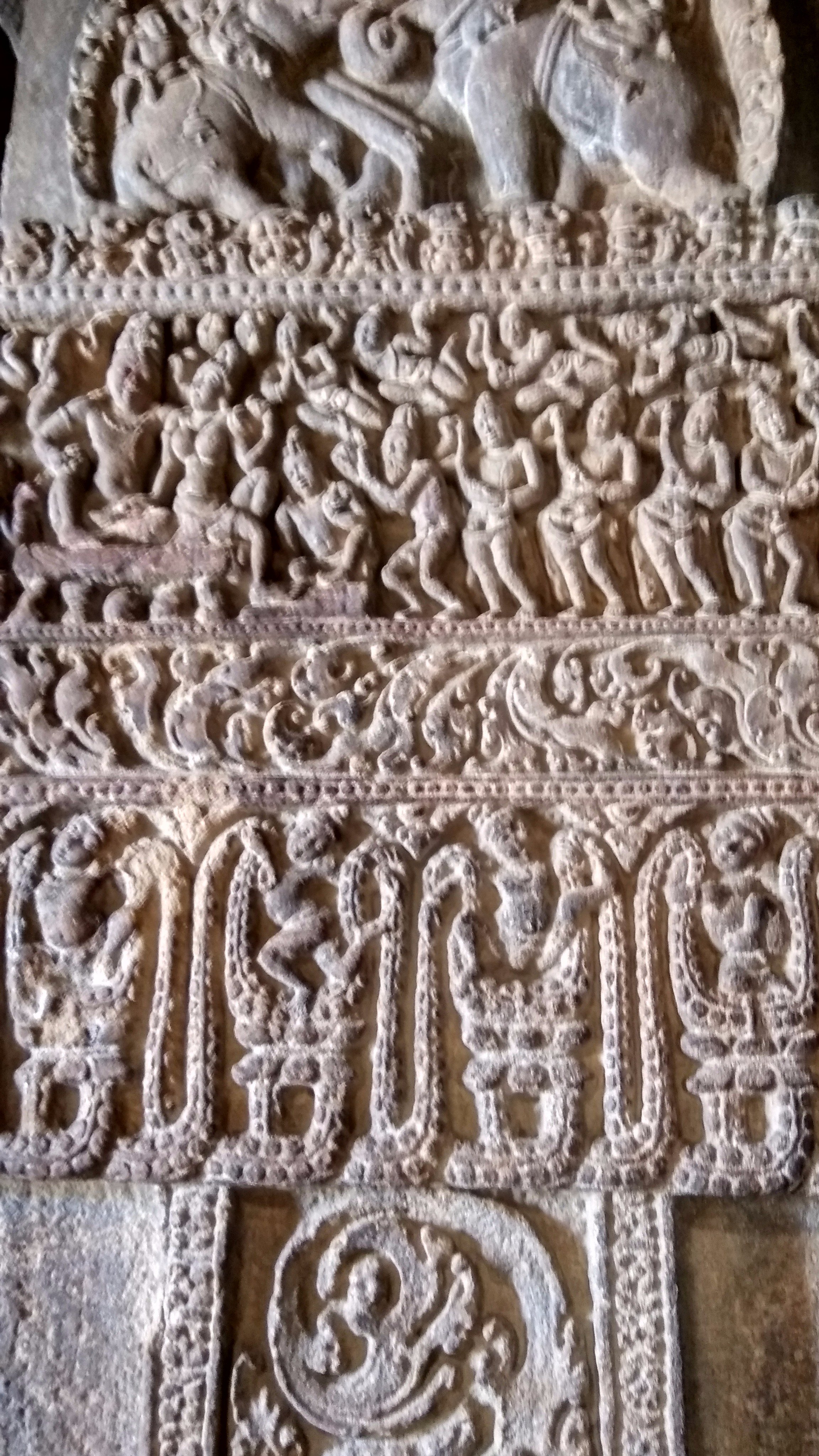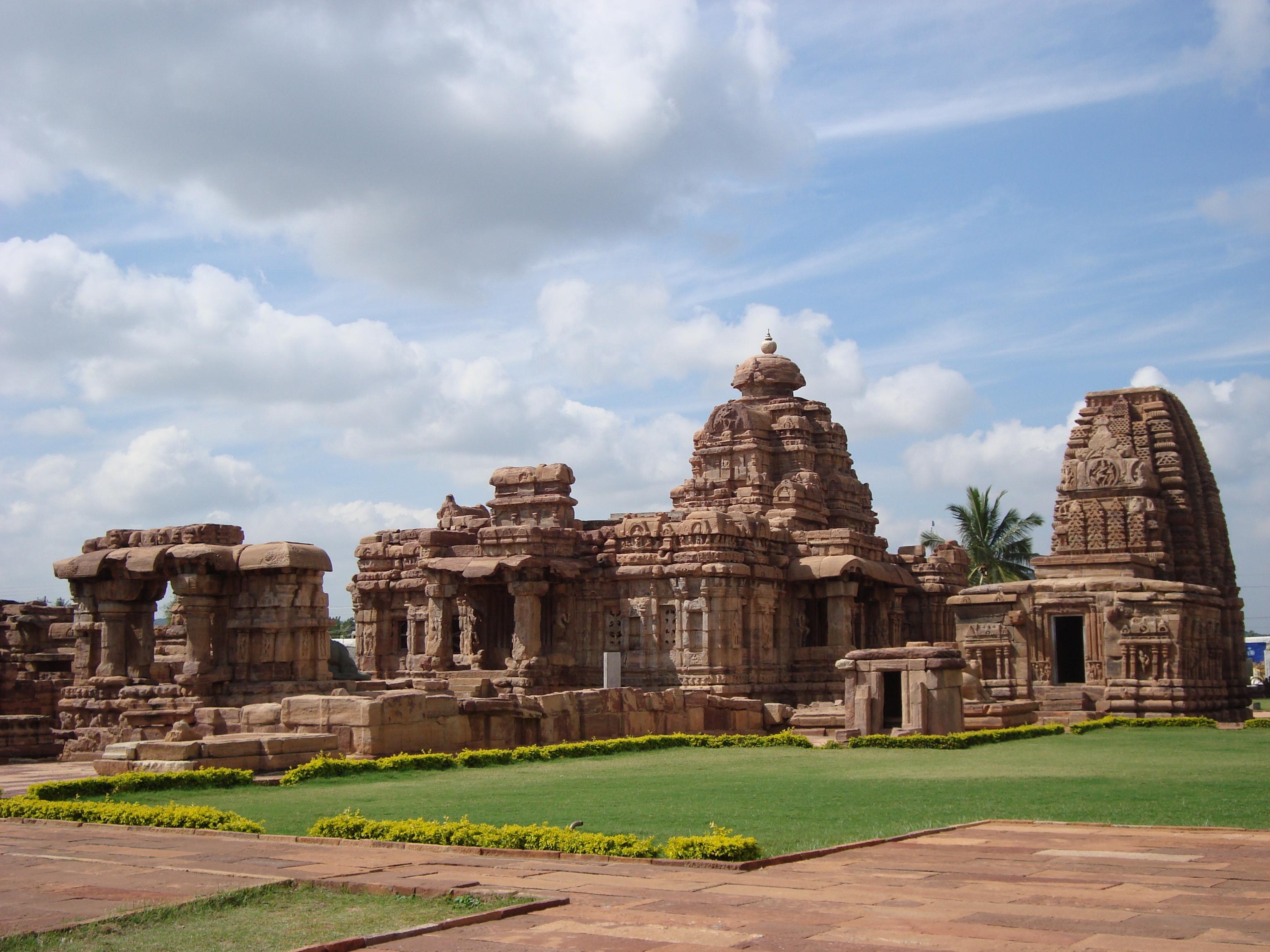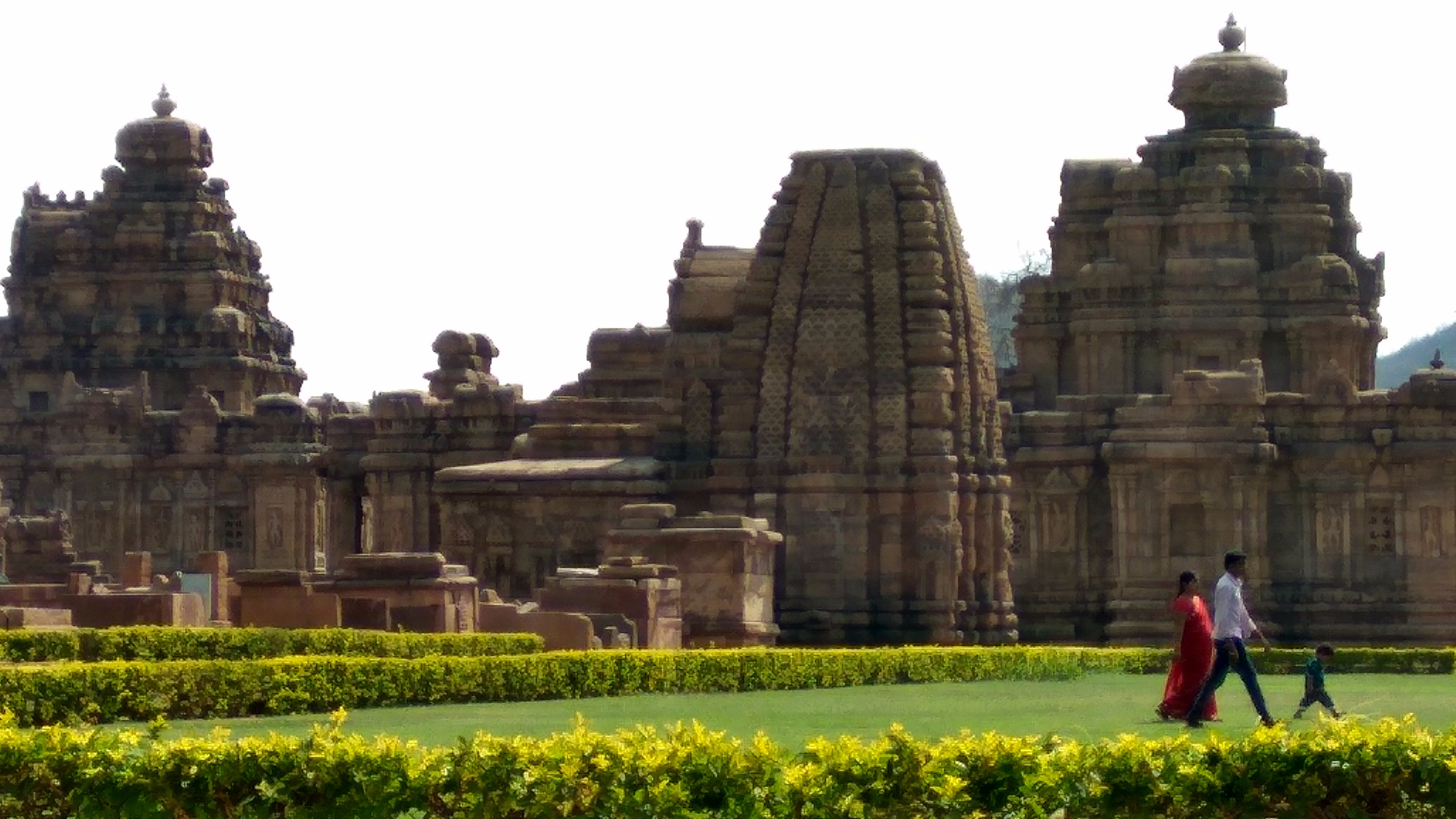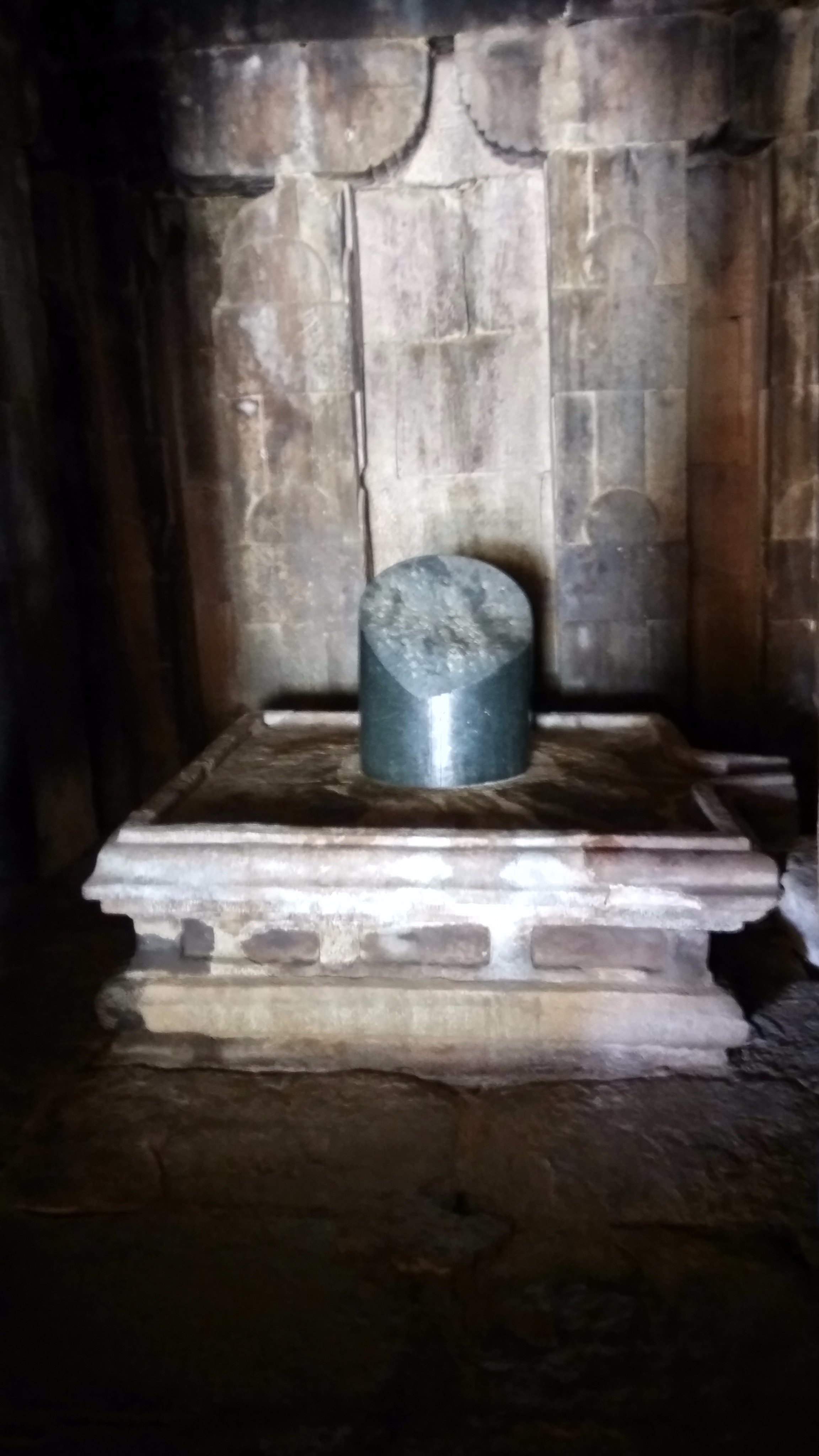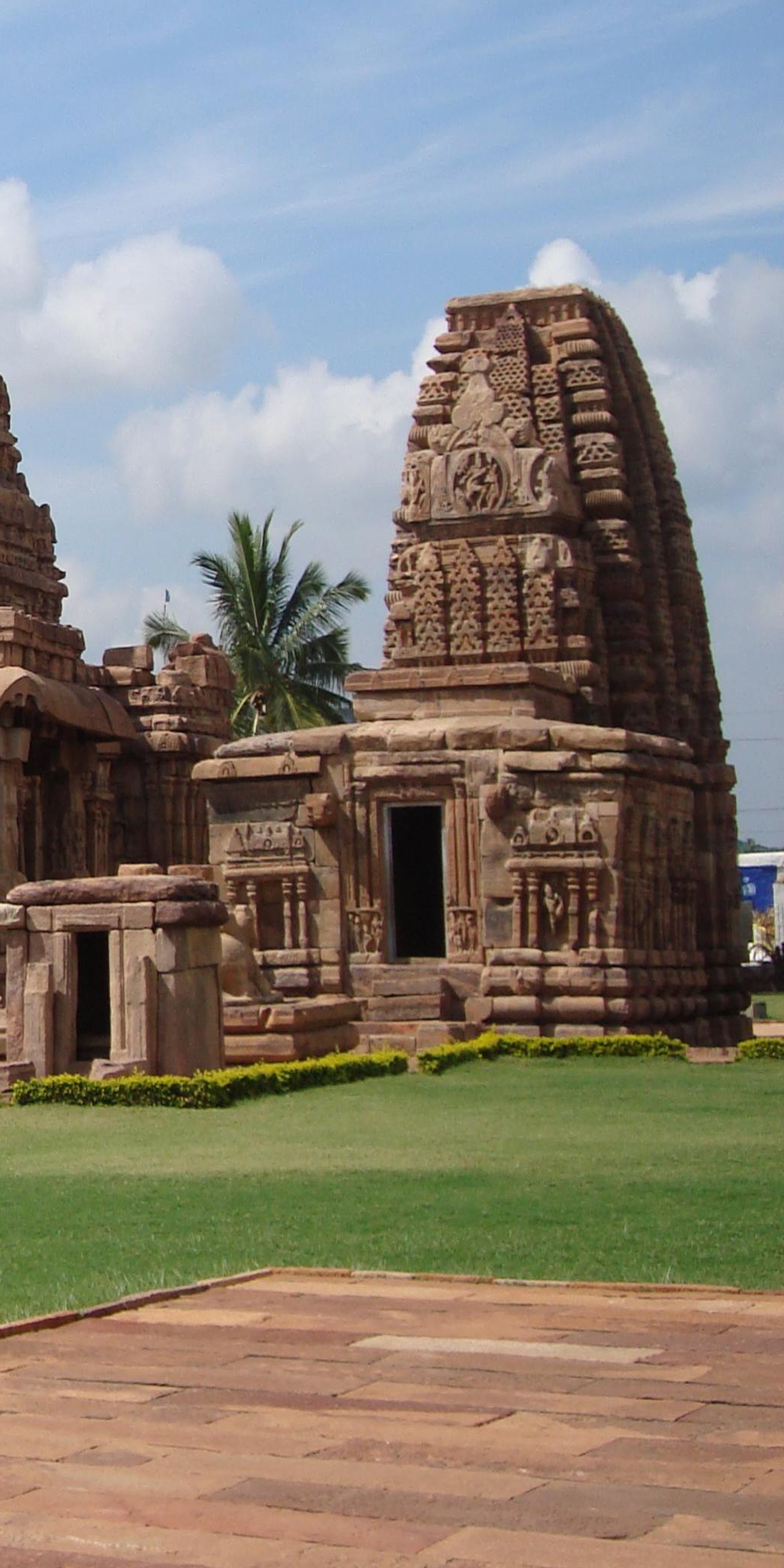These rock temples have withstood the test of time, from harsh weather to marauding invaders to present day apathy, its seen them all. It still stands there majestically even after 1500 years.
 |
| View of Bhutanatha Temple from Vatapi caves |
View of the Agastya lake & Bhutanatha temple from the Vatapi caves. Its over 1500 years old. It was built by the Chalukyas of Vatapi, who were one of the major imperial powers in Bharat at the time.
The lake gets its name from sage Agastya who is said to have performed penance here. There is also a carving of him in one of the caves opposite the lake.
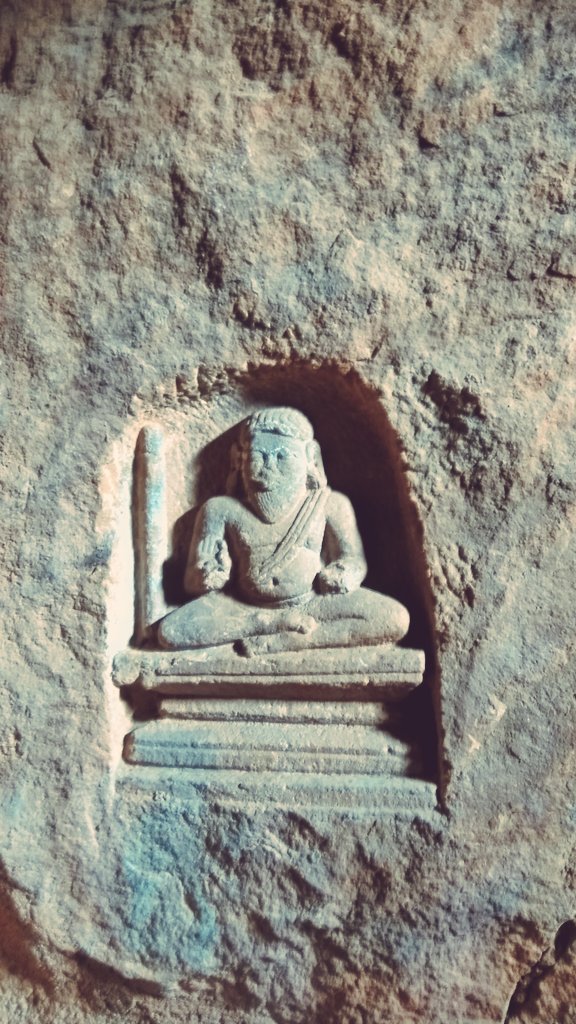 |
| Rishi Agastya |
Carvings of Varahaswamy, Ganapathi, Trimurthi Brahma/Vishnu/Maheshwara, Mahishasuramardini Durga & Narasimha en route Bhuthanatha temple
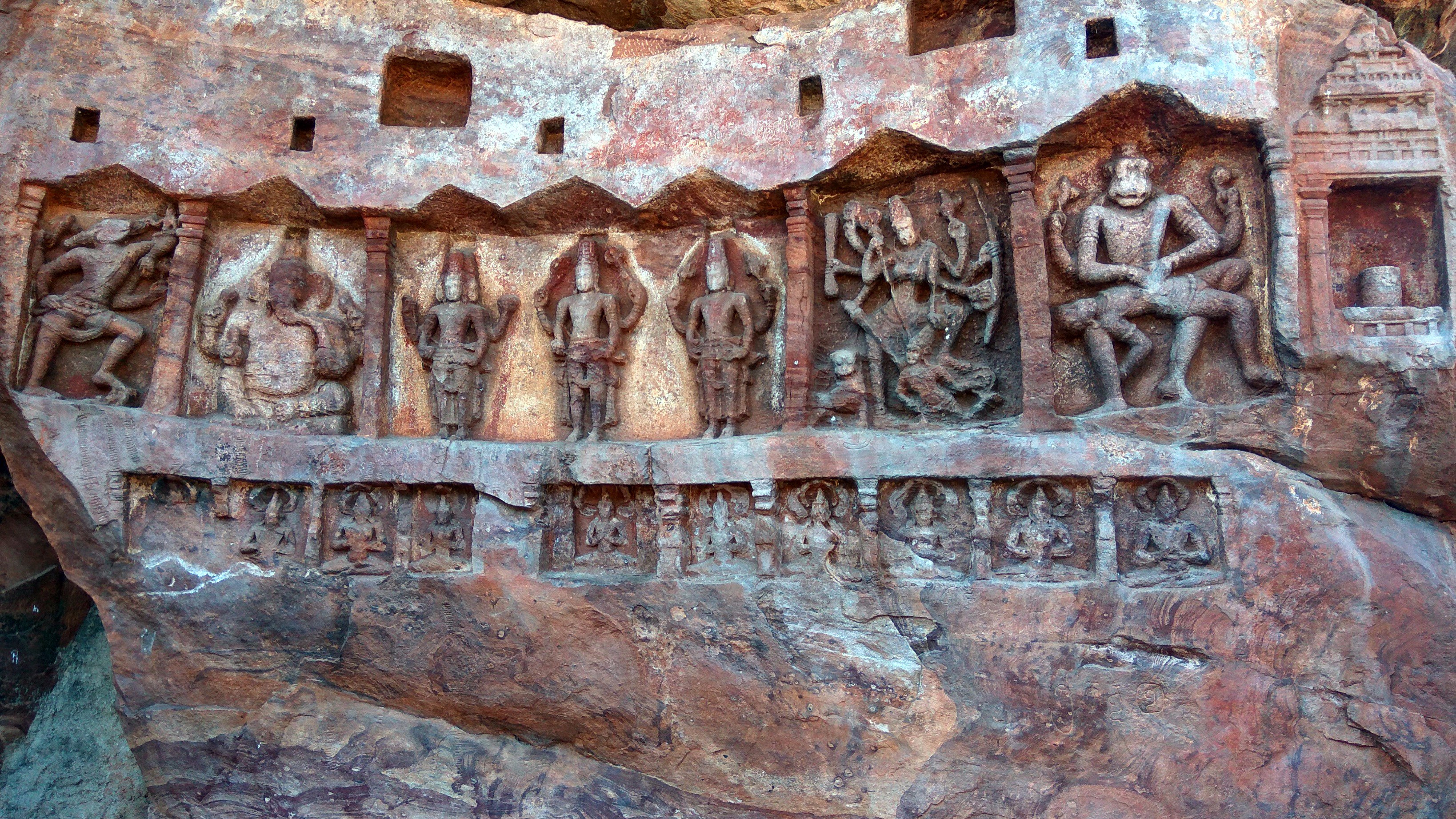 |
| Rock carvings of various deities |
Carving of Anantashayana Vishnu with Lakshmi and Garuda to the right. Above the reclining carved relief are the ten avatars of Vishnu Matsya, Kurma, Varaha, Narasimha, Vamana, Parashurama, Rama, Balarama, Krishna & Kalki. Between the Narasimha & Vamana is shown relief of Brahma cord connected to Vishnu's navel. To the left of the relief is depicted the Trimurthi of Vishnu, Shiva & Brahma, To the right is a human couple and a Kamadhenu.
A look at some of the carvings from the Caves of Vatapi. There are 5 caves in total. The one seen above is cave 1 which is dedicated to Lord Shiva.
The cave depicts Shiva as Maha Nata(Great dancer) on the rock face to the right of entrance.The eighteen arms of Shiva express Natya mudras with some holding objects such as damaru, agni, a sarpa, a Trishula and a kuThAra (axe). Shiva has Ganesha and Nandi by his side.
 |
| Maha-Nata Shiva |
 |
| Shiva Lingam inside the garbhagriha of Cave I |
Unfortunately not all murthis have survived. This Nandi opposite the Shiva Lingam has borne the full brunt of medieval islamic savages. The adil shahis & nizams frequently plundered Temples around the area. Infact these Temples were subject to islamic iconoclasm by even hyder ali, father of genocidal tyrant tipu sultan.
 |
| Beheaded Nandi |
Cave II to is dedicated to the various avataras of Maha Vishnu. Seen above is the 3rd Avatara of Vishnu, Varahaswamy. The carving depicts Varaha saving Bhudevi from evil asura Hiranyaksha. Varaha is depicted as lifting Bhudevi who had sunk deep beneath the ocean. At his feet is the Nagadeva. Also seen on the top right corner is Lord Brahma.Varahaswamy was a major pan-Bharat deity. From the Guptas to the Pallavas to the Chalukyas, all of them majorly incorporated this iconography in their architecture.
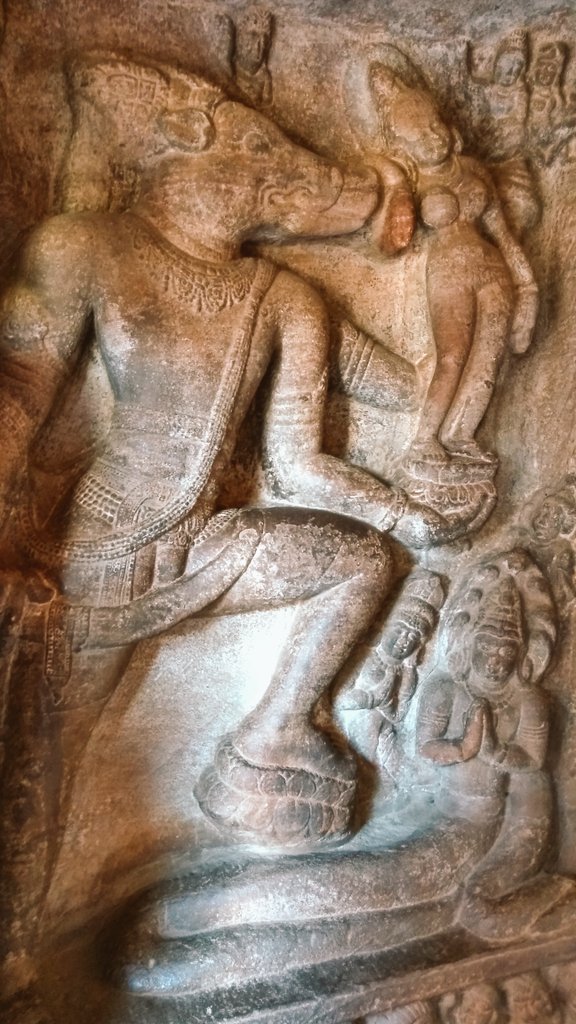 |
| Varahaswamy |
Cave II also has a relief of Trivikrama, who is a manifestation of the 5th avatara of Vishnu, the dwarf Vamana. Vishnu takes the avatara of Vamana, a dwarf to approach asura mahabali who had become mighty powerful & filled with arrogance posing a danger to all the trilokas. Mahabali also had a quality of giving dhaanams. Vamana asks mahabali for 3 paces of land.Vamana grows to a gargantuan size, known as Trivikrama, with the 1st step covers all of bhoolokha, 2nd step swarga & 3rd & final step mahabali offers his head for vamana to place his feet on, thereby sending mahabali to patalaloka. That's the depiction here.
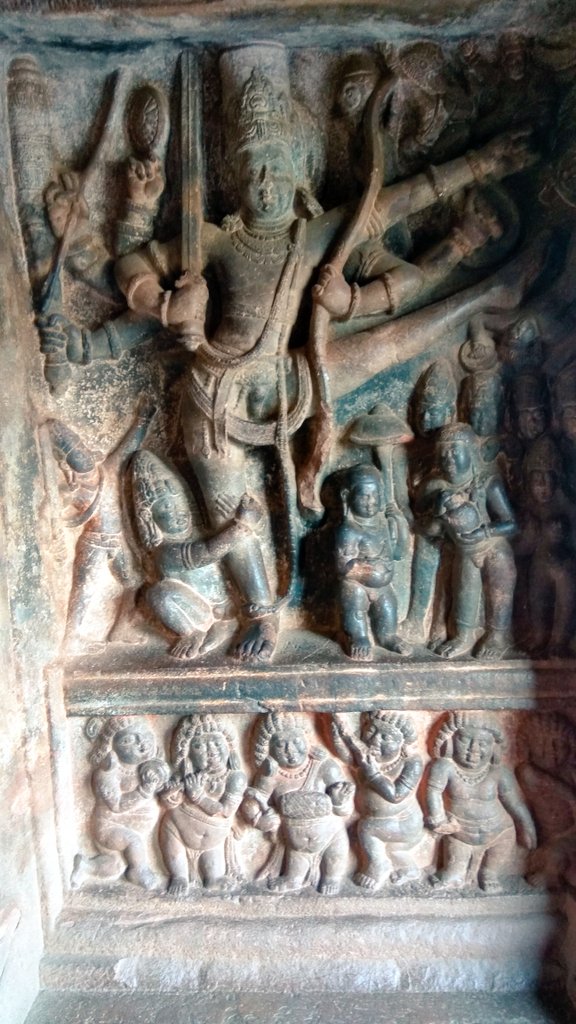 |
| Trivikrama |
Cave II is again dedicated primarily to Maha Vishu. Seen above is a brilliant carving of Maha Vishnu seated on Adi Shesha. He has 4 arms. The rear arms hold a Shanka & chakra. Notice the scales on the Shesha.
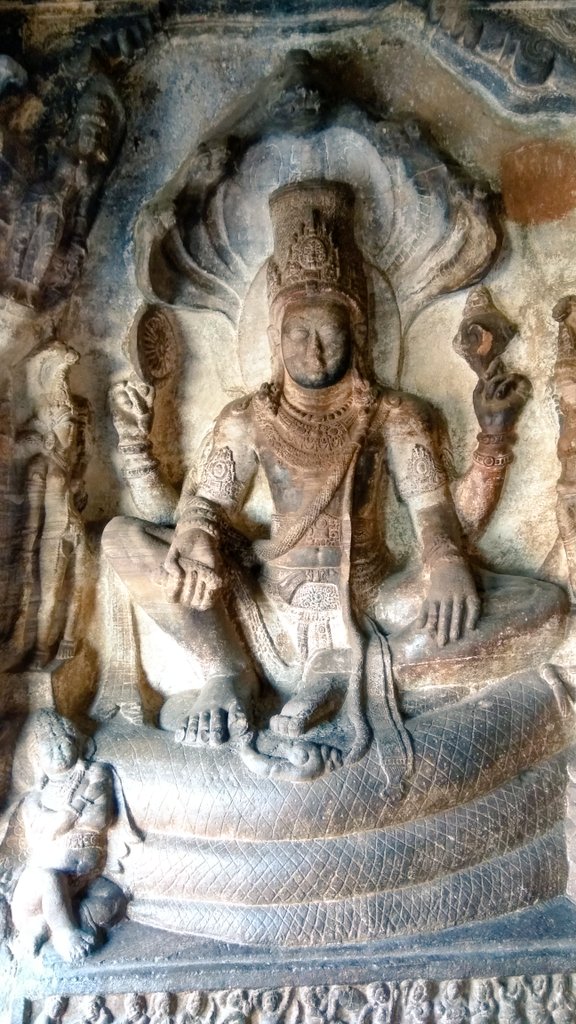 |
| Maha Vishnu on Adi Shesha |
Cave III also has a relief sculpture of Narasimha in standing posture.
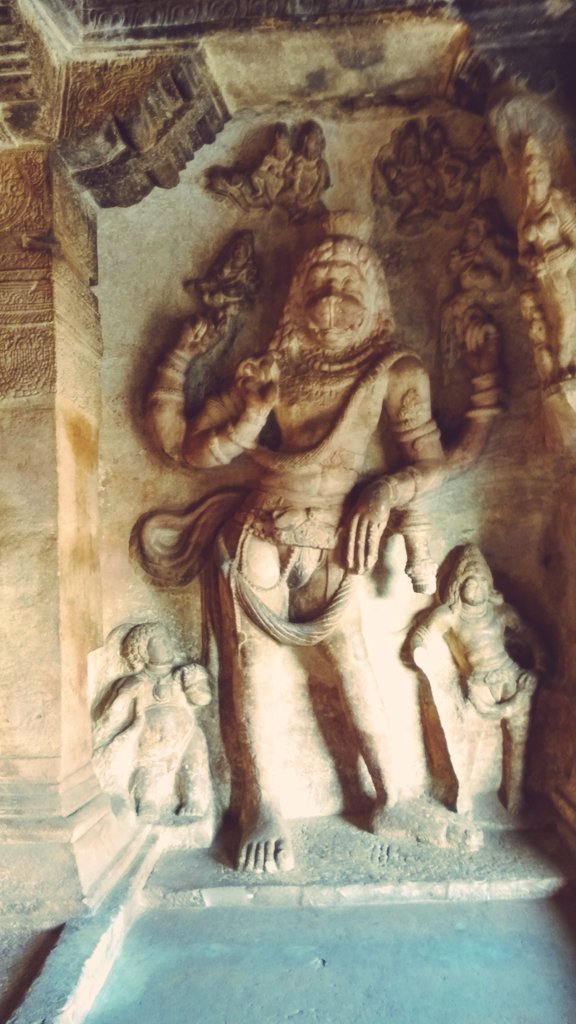 |
| Narasimha |
Most amazing aspect of cave 3 is how the Chalukyan architects managed to combine engineering with spiritual meaning. Carvings on the plinth.These are unique to cave 3. Just in awe at their resourcefulness. Not only does it strengthen the load bearing pillar, but also adds beauty.Amazing prowess of structural engineering our ancestors had. To go with it artistic taste.
| Bracket sculptures |
Cave 4 is dedicated to Jainism. There are carvings of Mahavira & other notable Tirthankaras. Equally artistic as the hindu ones. Seen above is the carving of the 23rd tirthankara Parshvanatha.
 |
Parshvanatha
|
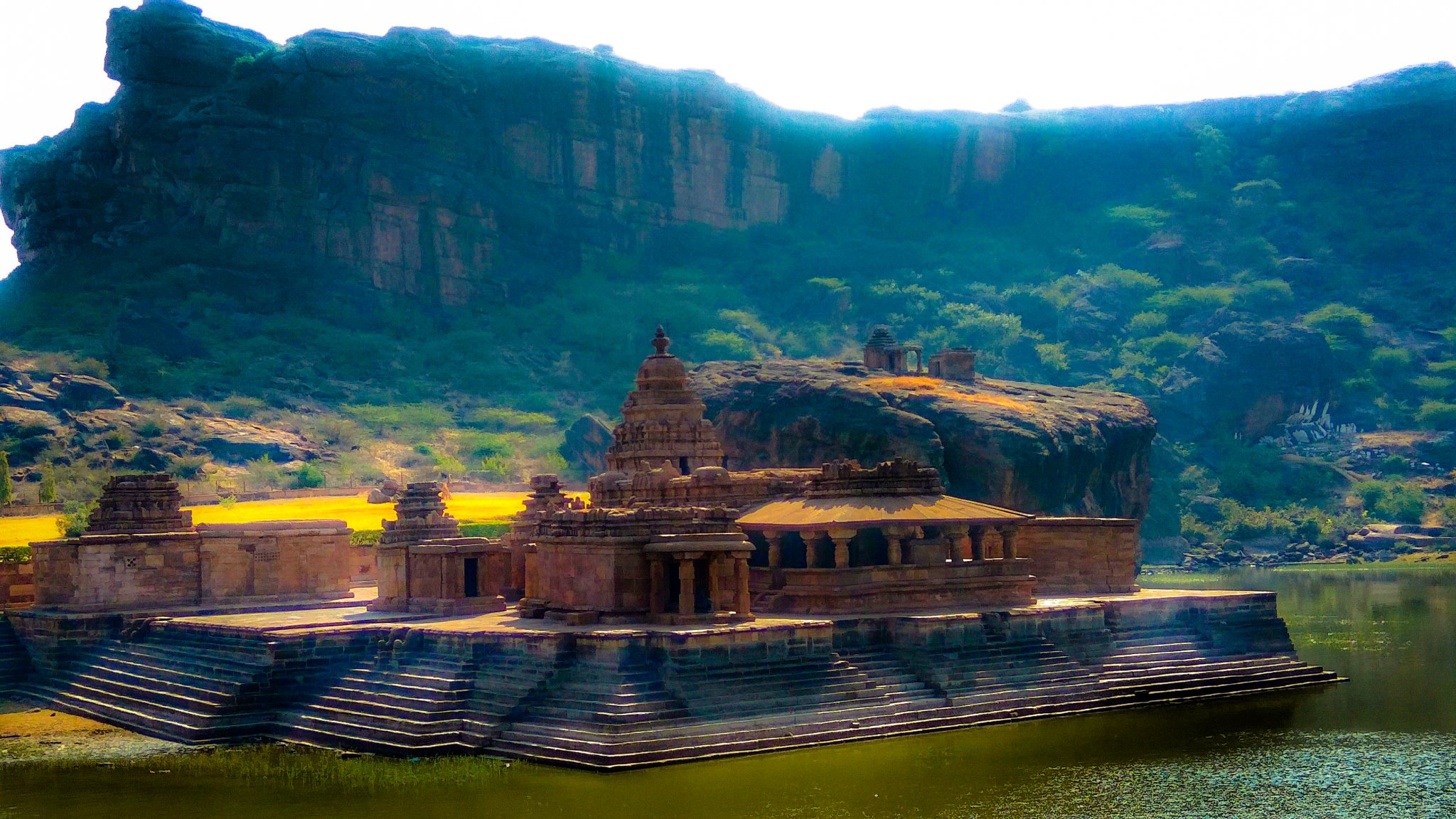
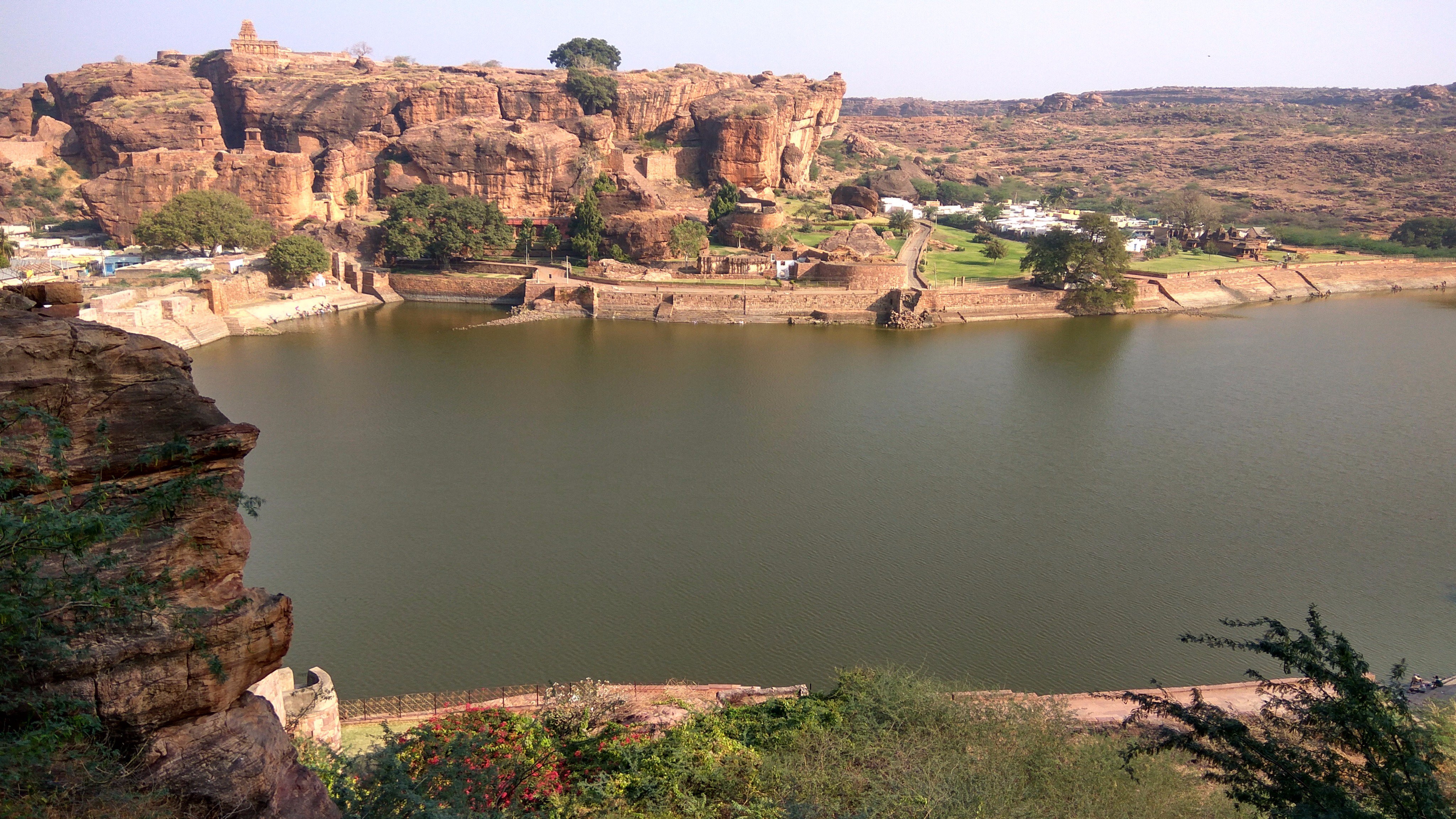
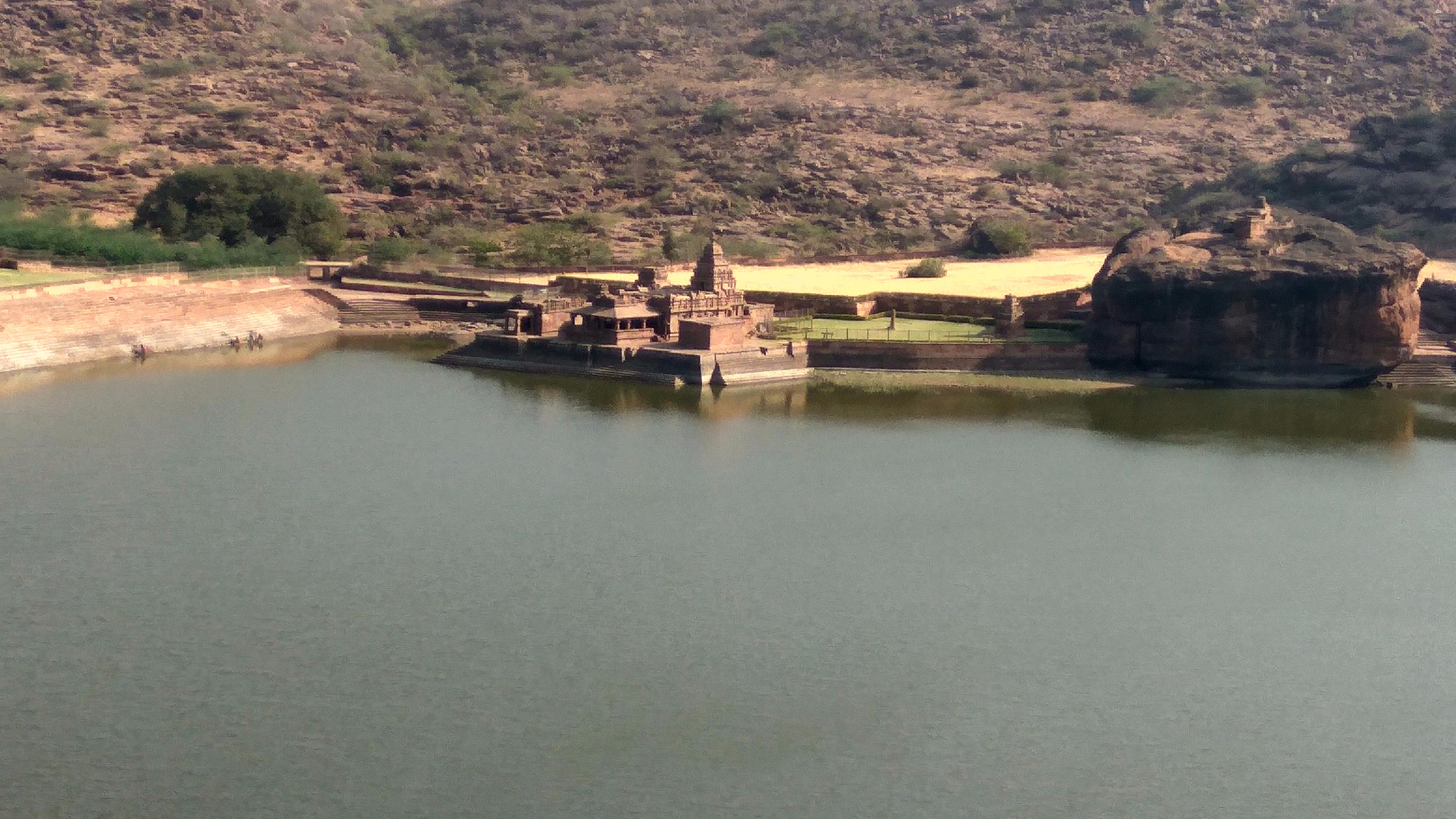
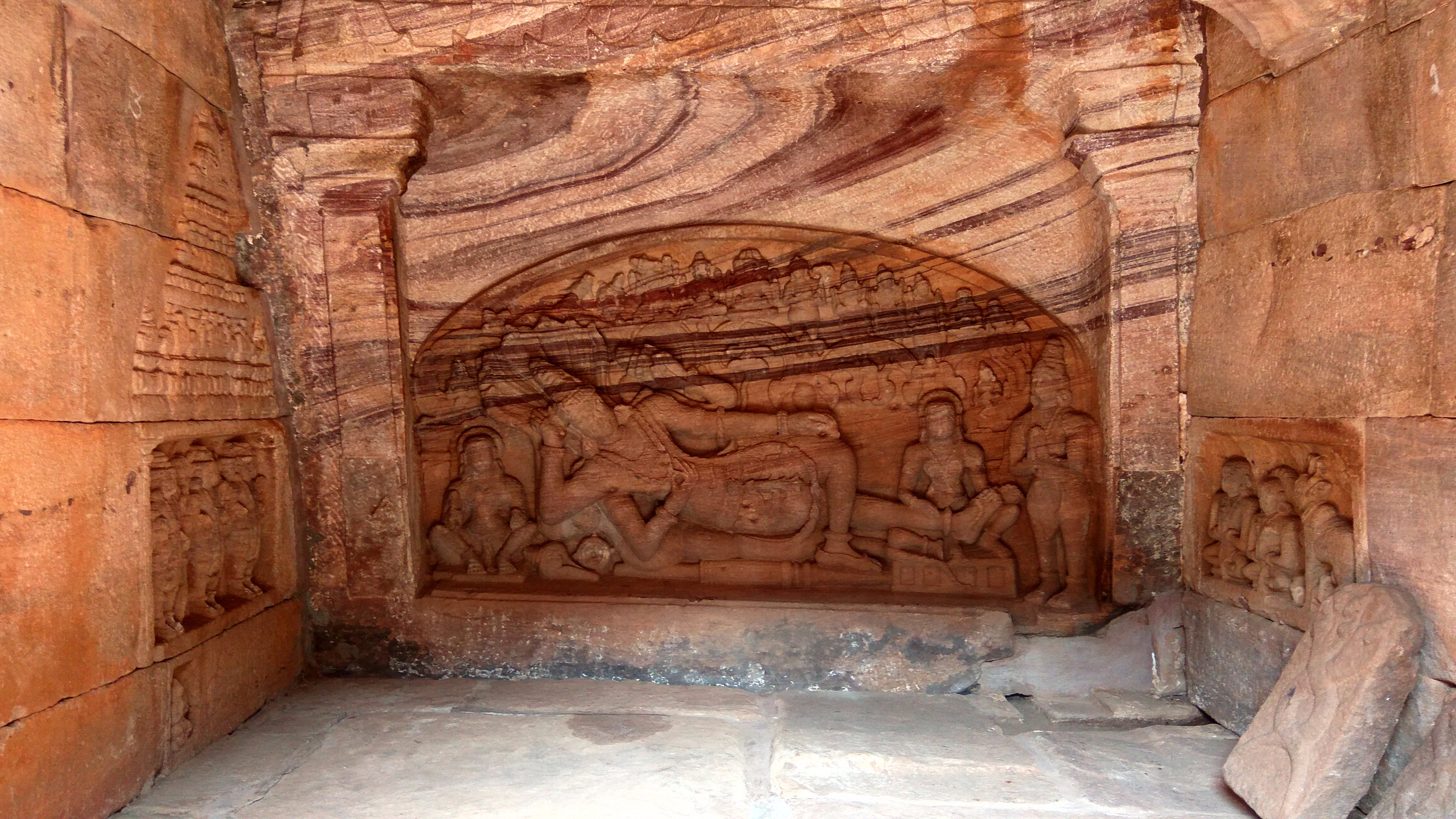
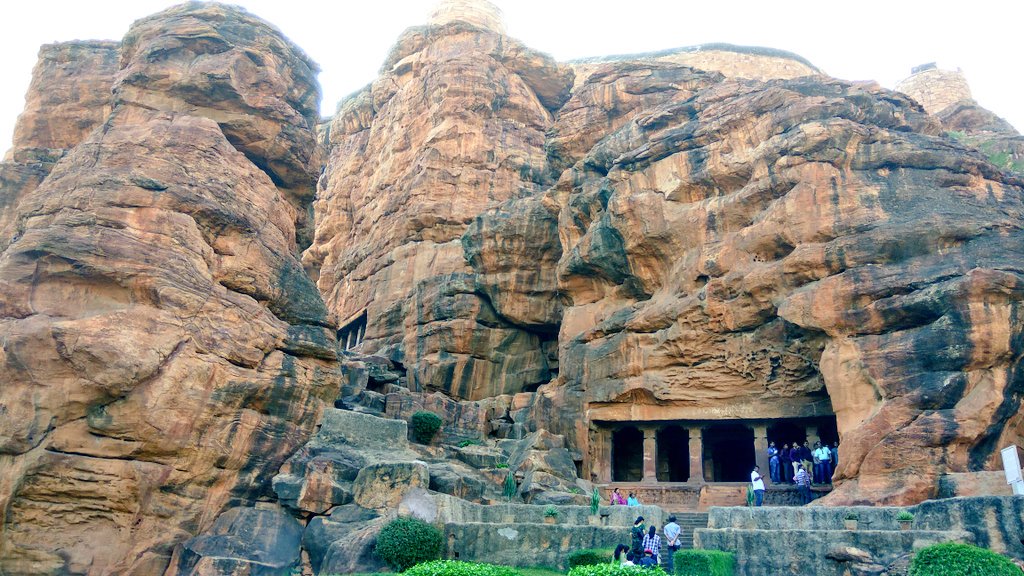
%2C_Badami_Hindu_cave_temple_Karnataka_2.jpg)
